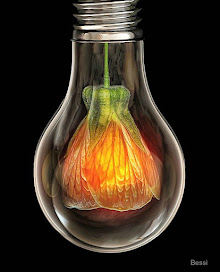There is a unique exchange that takes place between sensory object and self. In a single moment the ordinary becomes transcendent and deep connections are made. Time disappears as boundaries melt away and essences merge; a quality one finds in physical or spiritual love. Sensualists live vicariously through their senses and their ability to connect with beauty in such a passionate manner requires the utmost in skill and discrimination. Buying gifts for these individuals requires thoughtfulness and care. Forgo the faux and indulge in holiday exquisitries that stimulate the senses.
TASTE…
Oliviers & Co. Olive Oil with Bergamot 
More commonly recognized as an aromatic impression in tea than by name, bergamot is truly “the little orange that could.” Oil expressed from the
Citrus bergamia peel imparts an uplifting quality when used as a top note in perfumery and is prominently featured in Earl Grey tea, known the world over for its revitalizing scent.
Oliviers & Co. has infused one of its olive oils with bergamot and the result is an interesting balance of bright citrus, soft green and subtle floral notes (in that order). Recommended use for
Oliviers & Co. Olive Oil with Bergamot includes; shrimp & avocado salad, grated carrot salad, grilled scallops, chicken, lamb, green been salad, Greek salad, pasta, sautéed leeks, vinaigrettes, fruit salad and vanilla ice cream.
Prior to becoming White House Executive Pastry Chef, Bill Yosses created an
Olive Oil and Bergamot Fleur de Sel Cake at the 2006 “Worlds of Flavor Baking & Pastry Arts Invitational Retreat,” at the Culinary Institute of America’s Greystone campus. The fact that oil is one of the chief ingredients in chiffon cake suggests that experimentation with
Oliviers & Co. Olive Oil with Bergamot could lead to delightful discoveries. Earl Grey chocolate layer cake with cream cheese icing would be an indulgent start. Retail Price: $19.50 for 8.4 fl oz.
Dark Chocolate with White Pepper and Cardamom Bar, by Dolfin
Dolfin has a history of flavoring dark chocolate bars with interesting essences, but many of their dark chocolate bars are simply too sweet. Though the exact percentage of cocoa mass is not stated on their
Dark Chocolate with White Pepper and Cardamom Bar, taste and mouth feel indicate a percentage of 65% or higher. The heat of white pepper is gentler than its fiery red cousin, but its kick exhilarates taste buds like a refreshing flurry of snowflakes. Cardamom’s camphorous tendencies dissolve, delivering an impression that is decidedly rich and spicy. Small 30 gram bars are sold at Oren’s Daily Roast coffee chains in New York City and at $2.50 a pop, are completely irresistible. The bars, part of Dolfin’s
Saveurs du Monde line, are available in packs of five on
Amazon.com and priced are at $10.25.
TOUCH…
Darphin Aromatic Hand Cream 
According to Virginia Bonofiglio, adjunct professor of cosmetics and fragrance marketing at the Fashion Institute of Technology, most women’s hand creams are formulated with a white floral aldehydic scent. This would explain the generic olfactive memory one has when recalling the hand creams our mothers and grandmothers used (with the exception of
Jergen’s Original Scent, which still includes addictive cherry and almond notes). Darphin products were originally showcased in spas and the brand’s “treatment” heritage has infused
Darphin Aromatic Hand Cream with a more complex level of fragrancing. The platform is decidedly floral and vaguely aldehydic, but the way the scent blooms on skin melds traditional and modern freshness à la Jean-Charles Brousseau's
Ombre Rose.
Darphin Aromatic Hand Cream is so beautiful it could single-handedly revive the tradition of hand kissing. Retail price: $35.00.
Perfume-Filled Poison Rings by Ayala Moriel 
To say that
Smellyblog editor Ayala Moriel is obsessed with natural raw materials would be an understatement; her spirit is positively charged with an abiding respect for the history of perfumery in the natural realm. Her formulas are smooth, rarely jagged (an issue with many “natural” perfumes) and ingrained with beauty, humor and mysticism.
Moriel’s love of poison rings began with an Aztec poison ring her grandmother wore (a gift from Moriel’s grandfather, after one of several business trips he made to South America). In the past, one would conceal poison in the ring chamber as a means of protection from enemies. In Moriel’s hands, poison rings conceal solid crafted fragrances which can be applied to skin at leisure. The addition of the sense of touch to the fragrance experience is a magnificent pleasure indeed.
Price: $55-$100, depending on the particular ring (some are vintage and some are collector’s items). Shipping is $10, including insurance.
SMELL…
Histoire de Chypre (Aedes de Venustas/Molinard)
For over 12 years, fragrance connoisseurs seeking unique artisan fragrances have turned to Aedes de Venustas, a renowned perfumery boutique in New York’s West Village. Owners Karl Bradl and Robert Gerstner are extremely particular regarding pedigree and quality, so it’s no surprise that when the idea of designing an exclusive fragrance for the boutique came about, a perfumer found
them.
Perfumer Dominique Camilli’s access to the Molinard archives, along with subsequent collaborations with Braidl and Gerstner, has resulted in
Histoire de Chypre, a carefully crafted homage to a genre started by François Coty in 1917.
Histoire de Chypre begins with refreshing notes of Bergamot, Mandarin, Neroli, Jasmine and Galbanum, and moves into an addictive heart of Jasmine, Bulgarian Rose, Osmanthus and Iris. The Patchouli, Oakmoss, Musk and Amber dry down is très chypre, lacking the aged quality one may sometimes find in this historical fragrance category.
Histoire de Chypre (Eau de Parfum) is exclusive to Aedes de Venustas and is priced at $225 for a 3.4 oz. bottle (which is, incidentally, made of Lalique glass). The product may be ordered online or by calling 1-888-AEDES15.
SEE…
Lipstick Queen in Rouge Sinner
In the medium of lipstick, red is the ultimate color of seduction. The color of fire and blood, red turns heads with a quality of visibility that makes objects seem closer than they appear to be; a bona fide fact in color theory. In the world of lipstick, red can be a difficult color to wear. If the shade is not matched properly to natural lip color and skin tone, the effects can be clown-like or tawdry, which often keeps women from pursuing the joys of this pigmented provocateur.
Enter color maven Poppy King, whose name is synonymous with lipstick. “The best way to know if a red is right for you is to identify whether it is a blue-based red (one that is a little on the pink side) or a yellow-based red (one that is a little on the orange or clear side). “Getting over the fear of red lipstick starts with toning down eye makeup,” says King. “A woman knows if she has found the right red by looking at three key features, eyes, skin and hair, and seeing if these features have come alive and look illuminated with [the addition of] color.”
Lipstick Queen in Rouge Sinner is a shade of red that looks great on nearly every woman. The association of red with holidays and special occasions makes this the perfect time of year to indulge the senses with a terrific red lipstick. A less pigmented version of “rouge” is available in Lipstick Queen’s “Saint” line, which goes on like a lip stain, but is replete with moisture. Lipsticks are priced at $18.00 and are available at
Barney’s.
Irene Suchocki Photography
Canadian Irene Suchocki is a self-taught photographer whose evocative work blurs waking
Etsy.com.
boundaries and catapults the viewer straight into a dream world. “Fireweed,” a photo featured in the gallery marked “Through the Viewfinder” uses pink and sepia tones to illustrate a field of fireweed flowers. Remarkably astute, Suchocki gives equal weight to what is in and out of focus, resulting in photographs with multilayered facets that are not unlike a beautifully constructed fine fragrance. Unmatted and unframed prints are available in matte and metallic finishes, ranging from $35 to $155. Suchocki’s work is also featured on
HEAR…
Le Pas du Chat Noir by Anouar Brahem
The “oud” is a an instrument used in the Middle East and East Africa, and is equivalent to a fretless lute (not to be confused with the hypnotic raw material which makes
Tom Ford Oud Wood the equivalent of an aphrodisiac in a bottle). Anouar Brahem is a Tunisian oud player whose music is a mélange of classical Arabic music, folk and jazz, (think a very mellow Astor Piazzolla, resorting to minimalism and floating on a carpet of butterflies over the Mediterranean).
Le Pas du Chat Noir (which means "the path of the black cat’s footsteps") soothes the senses with a quality of auditory spaciousness that literally gives one room to breathe—a well-deserved respite from pre-holiday harriedness.


















